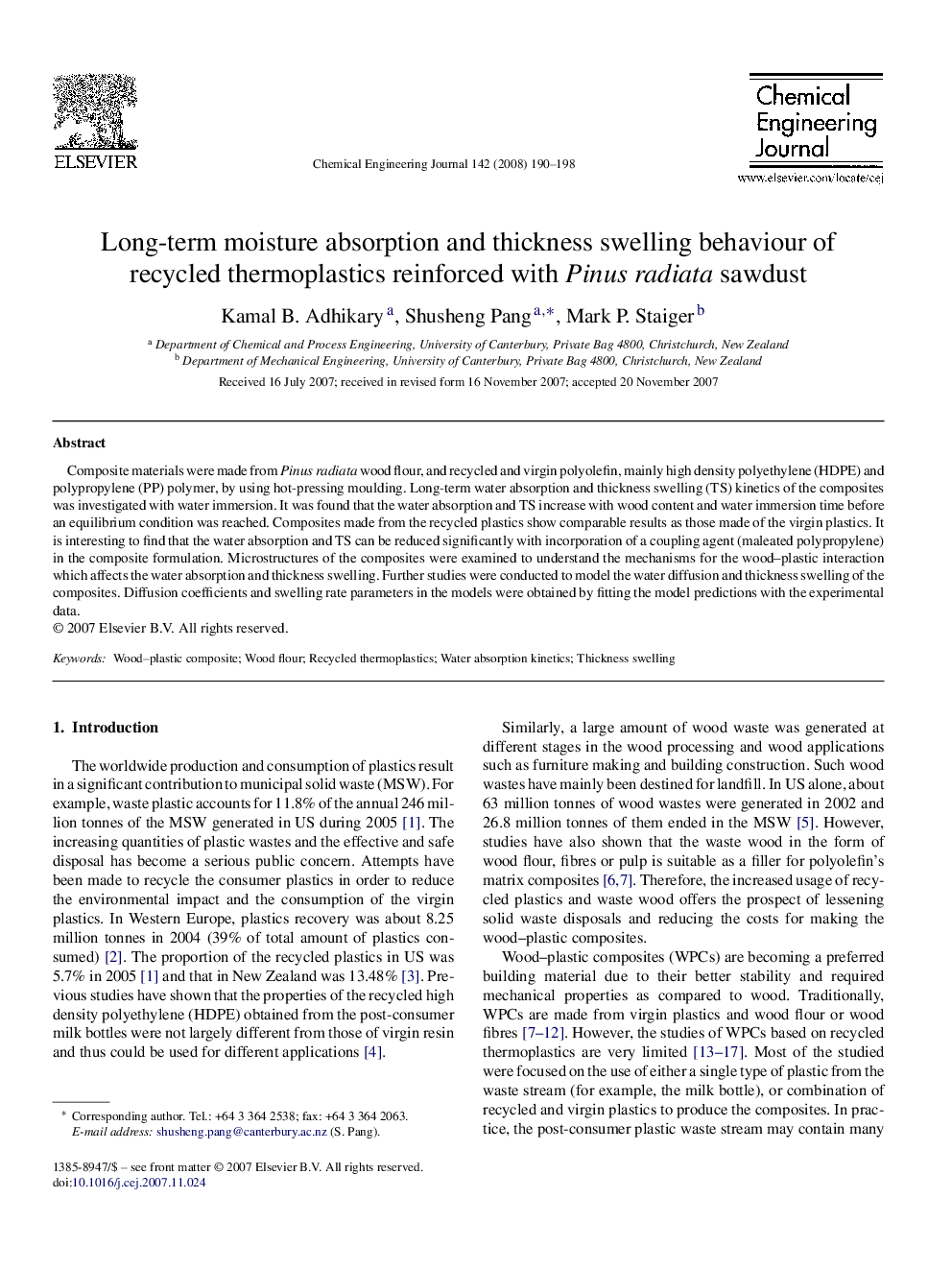| Article ID | Journal | Published Year | Pages | File Type |
|---|---|---|---|---|
| 152974 | Chemical Engineering Journal | 2008 | 9 Pages |
Composite materials were made from Pinus radiata wood flour, and recycled and virgin polyolefin, mainly high density polyethylene (HDPE) and polypropylene (PP) polymer, by using hot-pressing moulding. Long-term water absorption and thickness swelling (TS) kinetics of the composites was investigated with water immersion. It was found that the water absorption and TS increase with wood content and water immersion time before an equilibrium condition was reached. Composites made from the recycled plastics show comparable results as those made of the virgin plastics. It is interesting to find that the water absorption and TS can be reduced significantly with incorporation of a coupling agent (maleated polypropylene) in the composite formulation. Microstructures of the composites were examined to understand the mechanisms for the wood–plastic interaction which affects the water absorption and thickness swelling. Further studies were conducted to model the water diffusion and thickness swelling of the composites. Diffusion coefficients and swelling rate parameters in the models were obtained by fitting the model predictions with the experimental data.
